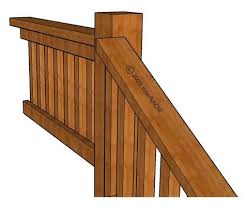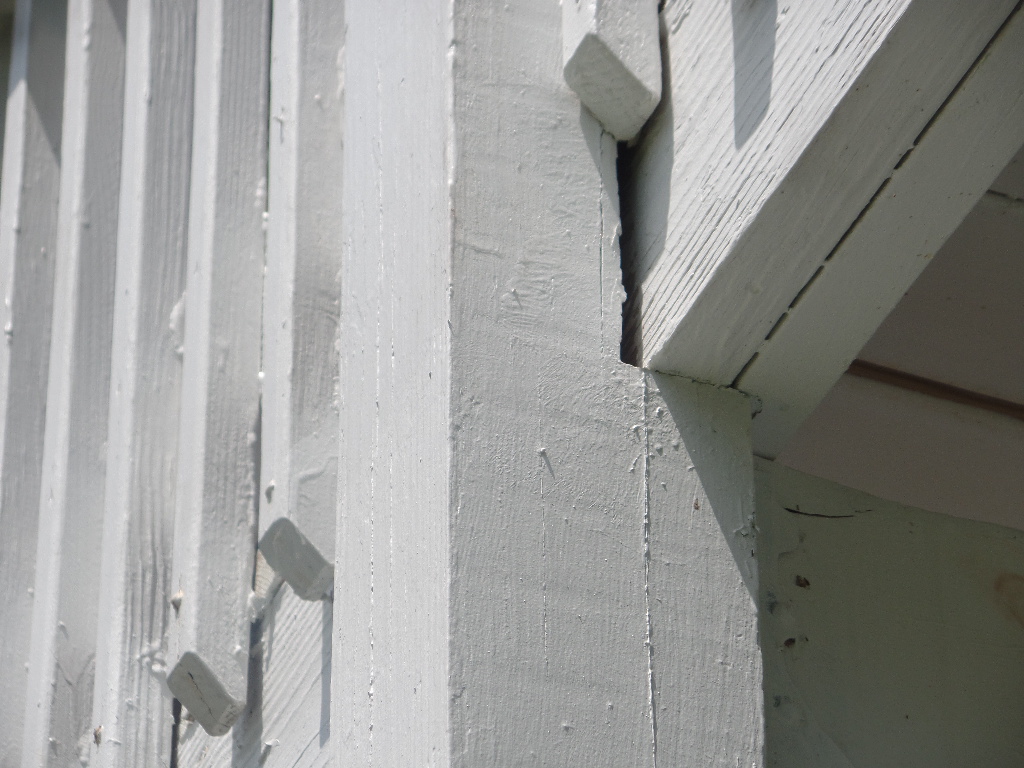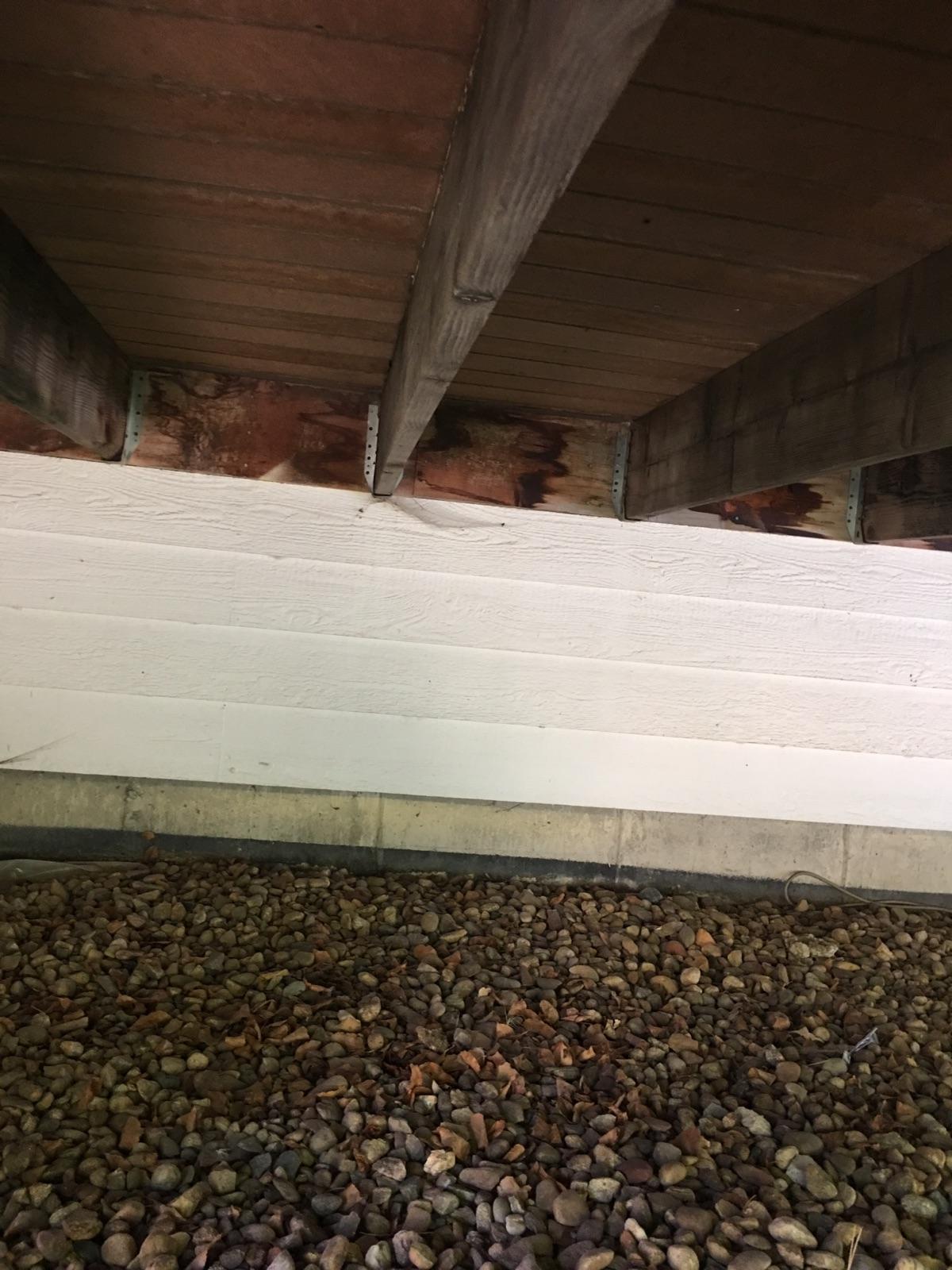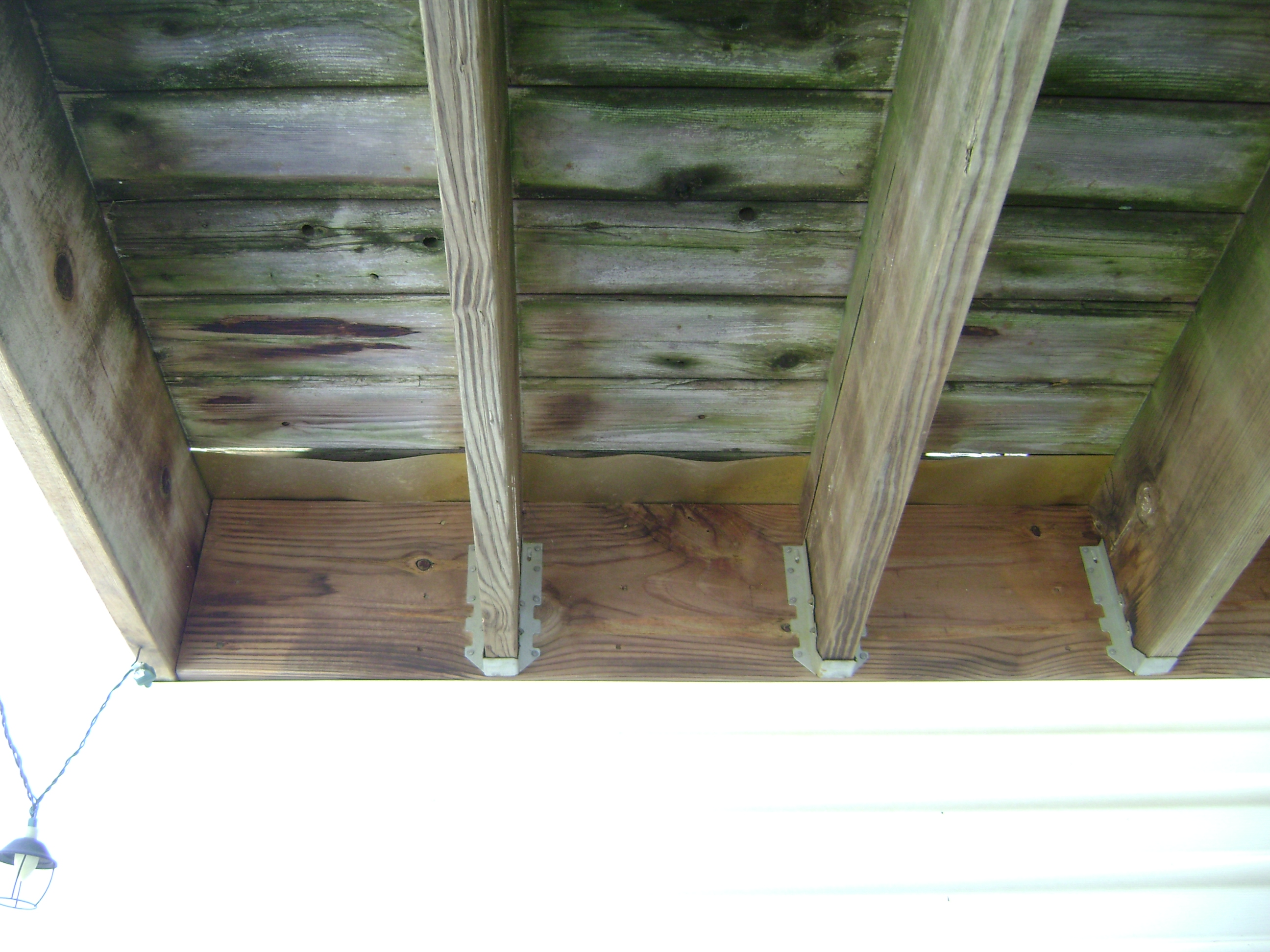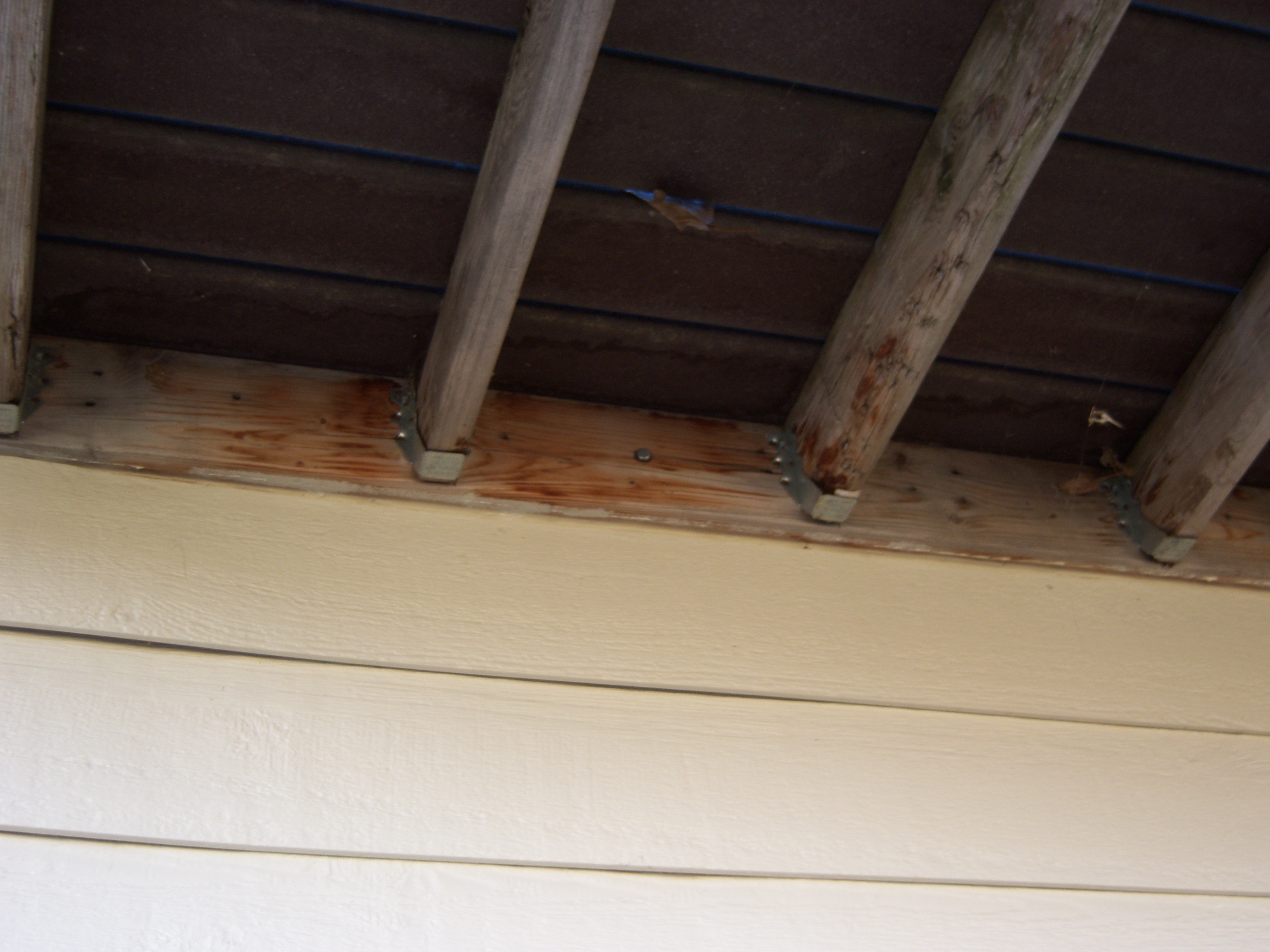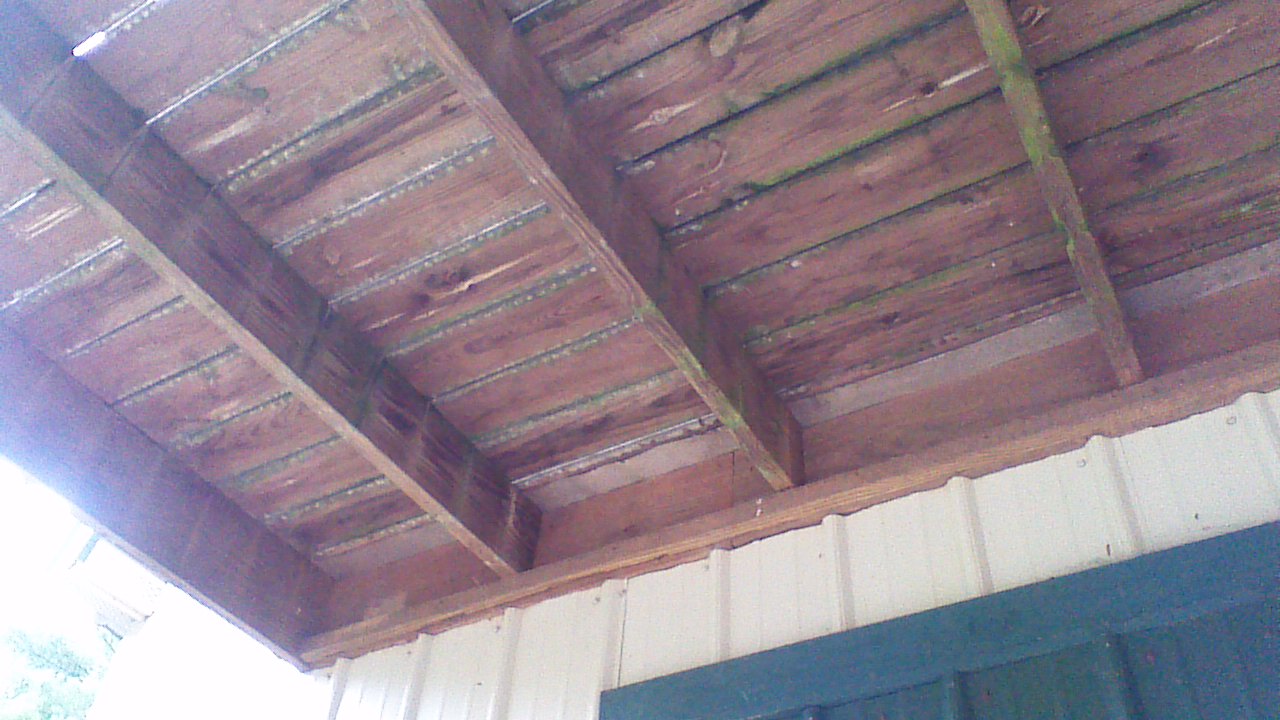I read Inspecting a Deck, Illustrated. It was actually exactly the same as this Deck Inspection video course, maybe a few extra images. It was nice to see all the images again and go over all the material before the final exam.
This deck had several deck deficiency. This picture showes that the deck floor joist and deck balusters is not resting flush on the deck post.This deck also had a few hanger joist installed up side down and many areas of wood components contain high percentages of moisture.
Deck failure is more common in the summer, and surprising there is no relationship between those built with a permit and those without. Almost all failures occur under occupancy load or heavy snow. A common issue with decks are the stairs not having handrails or not adhering to the dimensions required for hand rails (such as rail infill)
Deck failure is more common in the summer, and surprising there is no relationship between those built with a permit and those without. Almost all failures occur under occupancy load or heavy snow. A common issue with decks are the stairs not having handrails or not adhering to the dimensions required for hand rails (such as rail infill)
INTERNAL BALCONIES ARE COMMON IN MANY HOTELS.IN THIS CASE, YOU CAN SEE A PERIFERIAL INTERNAL BALCONY THAT COVERS THE WHOLE ROOMSAND FUNCTION AS A PERIFERIAL CORRIDOR.AS SHOWN AT THE PICTURE, ALL STORIES HAS BALCONIESAND THE CONNECTION BETWEEN THE LEVELS IS BY ELEVATORS AND STAIRS SYSTEM.

The" a letter explaining your internachi home inspector certification" is a very imortant tool for explaining the customer why he is going to hire a nachi .the article discribe the education every inspector needs to learn and examained and the continuing education which is mandatory if you want to keep you certification alive, even in stated that do not obligate state home inpction license
Its your job artical was very enlightening. We as inspectors are always concerned about professionalism. It has only happen a few times however, when testing cut off valves would leak and I informed the owner of the condition the owner has always understood in the past. Things were a bit different in a recent home inspection. I was under a tremendous amout of pressure from the real estate person. I cracked a window forged in the 1930s. I did replace the glass in the window. I feel I might have gained favor with the real estate person, I try to follow the INTERNACHI SOP however, it is a judgement call when to go beyound the standards. After reading this article I know in the past I handeled the cutoff valves the way I should however, windows I have leared to be more careful in which ones I try to open and which ones I should not try to open.
Upon inspecting this deck I observed that the ledger board is attached with nails. These could pull away from the house. This is a defect and needs to be corrected. I also observed water logging in the ledger board that could potentially weaken the integrity and strength of the deck.
When studying the cantilevered floor image, I come to see that it is important to check that the support beams are adequate and have two beams placed together, and that the support posts are added under the beams at the intersection properly.
A properly designed and constructed deck can support a reasonably expected load of people, snow and objects (40-60 PSF). The design must also be able to resist the lateral and uplift loads that are generated by people, wind, or seismic activity. Railings must be able to safely resist a 200 pound lateral force.
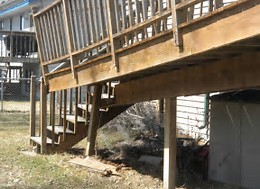
Structural failures also occur involving the support posts and deck joists. Primary Questions: Were the posts sized correctly based on overall height? Were the post foundations installed below the frost line, and did it follow the 7 Foot Rule? Was proper lateral bracing installed on each post? How were the deck joists attached to the ledger board? Did the contractor use the correct hardware?
Precast concrete steps; Handrails are in severely weathered condition including exposed bare wood and poorly secured fasteners. The lack of balusters/spindles, the poorly secureded hand rails and overall condition of handrail construction it is recommenced to have it evaluated by a licensed construction contractor.
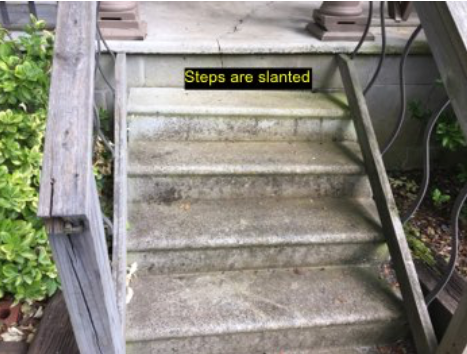
The article on "Deck Receptacles " supported the video concerning the type of outlet and the use of extension cords. I found the statistics on extension cords to be very interesting and will begin to use some them as naritives in my reports.
The photo shows the ledger of a deck from a recent inspection. The ledger board has no lag bolts at all fastening it to the wall. It was fastened with regular framing nails. I noted on the report that the ledger should have lag bolts installed every 8 to 10 inches because of the 12 foot joists.
“Inspecting a Deck, Illustrated” In this article as well as the course it is estimated that 40% of all decks are considered completely safe. I can say that I have not been inspecting homes for very long, but I have yet to see even one deck that is completely safe, so the number at least in Missouri may be much lower.
Deck components. They following is a list of the components that are required for a proper deck. Footing should be below the frost line and at least 12in wide. Posts should be 6x6 and pressure treated if in contact with cement or the soil. The cut end should be used at the upper end. Leger board should be properly secured to the band joist with lag bolts. Joists should be hung with hangers and proper fasteners as well as a rim joist. Posts should be used every 6 feet as well as balusters no more that 4in apart to construct the guard. Decking shall be place 1/8 in apart to allow water to pass through.
A recent balcony inspection pictured above. The ledger board has too few fasteners attaching it to the house. The joist hangers are missing nails to the joists. Effectively this deck is attached to the structure with 4 nails. The joists are rotted and have algae growing on them. There are many more defects with this balcony. It was not mounted out of safety concerns. Recommend licensed contractor for further evaluation and repair.
This deck is approx. 12 feet off the ground. The ledger board has been nailed to the rim joist. This should be attached using lag bolts or lag screws at least 1/2 inch thick. Deck joists are attached by toe nailing and no joist hangers were used. Toe nailing can split the wood and weaken the deck structure. This deck is pretty high up so recommend further evaluation by licensed contractor. This is a safety issue.
I looked up inspecting a deck, illustrated. It was interesting to read about how a ledger board could be attached to cement or concrete masonry units. Rather then flashing in these 2 types a good outdoor caulk is used between the wood and the wall material.
Handrails should be graspable, continuous and smooth. They should be between 34 inches to 38 inches in height, measured vertically from the sloped plane adjoining the tread nosing. There should be a post for every five feet of stair railing with permitted spacing of 6 inches at the stairs and four and three eighths between rails.
